Sorrow and Love Flow Mingled Down
Palm Sunday
A guest essay by Sara Miles (http://www.saramiles.net/). Sara is Director of Ministry at St. Gregory of Nyssa Episcopal Church in San Francisco (http://www.saintgregorys.org/) and the author of Take This Bread. Her new book is Jesus Freak: Feeding, Healing, Raising the Dead (Jossey-Bass, 2010).
For Sunday March 28, 2010
Sixth Sunday in Lent
Lectionary Readings (Revised Common Lectionary, Year C)
Isaiah 50:4–9a
Psalm 31:9–16
Philippians 2:5–11
Luke 22:14–23:56 or 23:1–49
Hosanna! We’re entering Holy Week. We are going up to Jerusalem.
That is, like Jesus, we are going down to our deaths.
Like Jesus, each of us is headed toward a cross, one way or another. But there are different paths to the cross: the way of the crowd, the way of separateness — and the way of Jesus. Today, on Palm Sunday, these paths are held up for us to survey.
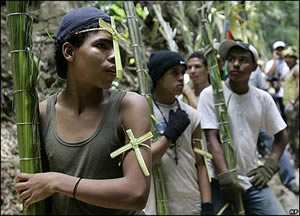 |
An Orthodox teacher used the phrase “glittering sadness” to describe Palm Sunday. There is such unbearable beauty, and such pain, today. Jesus is hailed as king, and winds up as a slave; he will empty himself, accepting torture and execution at the hands of humans with total forgiveness. He loves us to the end.
As the hymn says: See, from his head, his hands, his feet; sorrow and love flow mingled down...
Palm Sunday reveals the passion, the sorrow and the love intermingled at the heart of all our lives. It forces us to choose how we will arrive at the cross: bearing that pain together, or using it to separate ourselves from others.
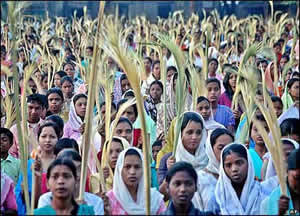 |
The great poet W.H. Auden was asked once why he was a Christian, instead of a Buddhist or a Confucian, since all these religions share similar ethical values. And Auden said, “Because nothing in the figure of Buddha or Confucius fills me with the overwhelming desire to scream, “’crucify him’.”
The desire to crucify is the way of the crowd. A crowd has the power to make people feel less alone in the face of death. This is why crowds are always at the heart of the violence done by religions and rulers. I remember sitting in a little church in a small ocean-side town the Sunday after the 9/11 attacks, and hearing the priest and parishioners pray for the murdered victims, and for our nation, and for the heroic firefighters. I sat there in agony, looking at the American flag at the lectern, unable to open my mouth and pray for the terrorists.
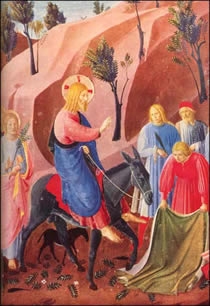 |
The crowd is seductive: it makes and shapes our worldly identities, through violence, casting-out and separation. It lets us say, as Jesus’ own disciples will soon say: “That man? I don’t know him; he’s not one of us.” The crowd helps frightened, isolated individuals identify with the power of Caesar, the power of the temple, the nation, the tribe. The crowd allows prideful humans even to attempt to take the place of God: deciding who to judge, who to punish, who to scapegoat, who to allow into our body. And so we go to the cross, to our inevitable deaths, clinging to the fantasy of power: a fantasy that keeps us, finally, isolated in our pain.
But we do not have to walk to the cross alone.
When my wife began nursing school, she and her classmates had some rough days getting used to the inevitability of sickness and death. Then out of the blue, one of the student nurses in their group, just 40, was diagnosed with massive, inoperable brain cancer, and told she’d probably die within a couple of months. She had a 13-year old son and a husband. So that week all the student nurses put together an offering for their friend, a handmade blanket, and went together to the waiting room where the husband was, and stood around him in a circle while he cried and cried and cried. My wife said she wanted to fall down in that room. “How can something be so unbearably sad,” she said, “and just so, so beautiful?”
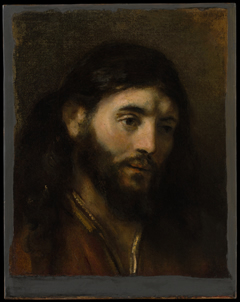 |
In the presence of Jesus’ love, a love that goes beyond death, we want to fall down. At his name, we have to bend our knees. Because the truth is every one of us is going up to Jerusalem, down to our deaths. Every one of us will suffer.
But we do not have to do it alone. We can love one another anyway, to the end.
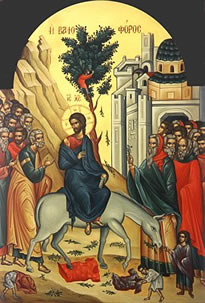 |
Like Jesus, who accepts today’s hosannas knowing that his friends will betray him, the crowd will turn on him, and his only crown will be pain. Like Jesus, who does not claim equality with God, but submits to God, emptying his own self so he can be filled with God’s love.
And from his beautiful, bloody head, his hands, his feet, sorrow and love flow mingled down. Look, Jesus says: this is how you do it.
And so, in this glittering sadness, we take up our cross, and follow him.
For further reflection:
St. Brendan the Voyager (484–577)
Irish monk
The Journey Prayer
God, bless to me this day,
God bless to me this night;
Bless, O bless, Thou God of grace,
Each day and hour of my life;
Bless, O bless, Thou God of grace,
Each day and hour of my life.
God, bless the pathway on which I go;
God, bless the earth that is beneath my sole;
Bless, O God, and give to me Thy love,
O God of gods, bless my rest and my repose;
Bless, O God, and give to me Thy love,
And bless, O God of gods, my repose.
Image credits: (1, 2) BBC News in Pictures; (3) JoyfulHeart.com; (4) NetMuseum.org; and (5) ImpactFolios.com.





